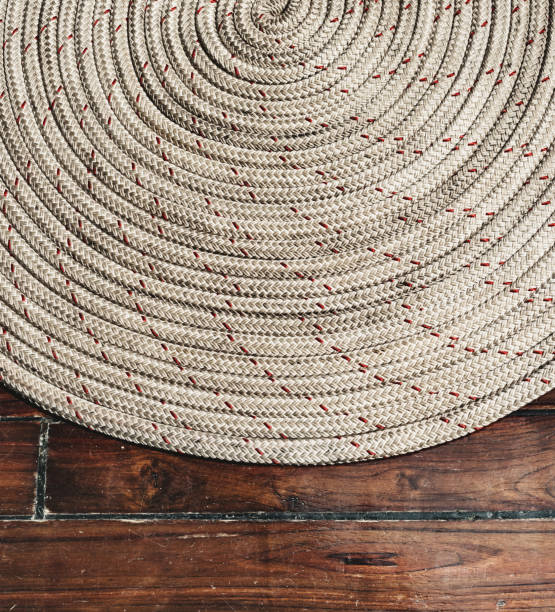A hand-knotted carpet is the perfect way to bring a timeless and unique style into your home. Hand-knotted rugs are known for their unmatched beauty and durability. They can bring color, style, and warmth to any room. Hand-knotted carpets are meticulously handcrafted using weaving techniques that date back to 1000 years.
This guide will teach you everything you need about hand-knotted traditional rugs. It will help you to decide if these pieces of art are the perfect addition to any home.
Hand Knotted Rugs: A Quick Look
Hand-knotted carpets are made using the traditional technique of hand-knotting on a specially designed loom. Hand-knotted rugs are made using a conventional method that dates back over a millennium. Hand-knotted carpets are a laborious and expertly done task. The weaving process involves thousands of knots that are individually tied onto a rug base.
The knots used in traditional hand-knotted carpets vary according to the region and origin of the rug. These knots are either Turkish, Oriental, or Persian. The latter is the most popular hand-knotting method.
The flat, pileless texture of hand-knotted rugs is also known as flat-weave. Hand-knotted rugs can take months, or even years, to complete, depending on their size, complexity, and design. Hand-knotted carpets are also more expensive than other types of rugs due to the amount of time and effort invested in their production.
It may take longer to make the rug, but the result, with its finer details, is more appealing. Each hand-knotted carpet has a sense of tradition and sacredness to it. This is because every rug is created by a weaver skilled in the art who spends many months creating beautiful patterns. The time and care taken to develop these rugs makes them sacred.
What are the materials used in hand-knotted rugs?
Hand-knotted area rugs are made from natural fibers, not synthetics, such as nylon, polypropylene, or acrylic. Hand-knotted area rugs are primarily made of natural fibers, such as wool or silk. Silk hand-knotted carpets are more expensive, and they’re in high demand because of their luxurious texture. However, wool is the most common material used in hand-knotted carpets.
Wool is antibacterial, hypoallergenic, and renewable. Hand-knotted rugs are made primarily of sheep’s or goat’s wool. However, alpaca and alpaca varieties can also be found. Hand-knotted hand-silk blends add a luxurious feel to any area they cover.
How to Identify a Hand-Knotted Rug
Finding an authentic product is difficult with so many options available on the market. You will notice that there are many different types of rugs when you begin to look for one. It is difficult to distinguish the real from the fake. There are several things you can check to determine whether the rug is a real carpet.
Back of the Rug
In contrast to machine-made rugs, which are typically coated with latex to keep the tufts in position, a traditional wool rug does not have any backing. If a carpet is backed, then it’s not an authentic hand-knotted one.
Knots of the Rug
The knots on the rug tell a lot about it. A hand-knotted rug will have slightly uneven knots, while a machine-made rug is uniform and has even knots. Machine-made rugs do not have the tight knots that are visible in a hand-knotted rug. Machine-made rugs have a lot of knots that are not real knots. They are made up to look like knots but are actually just fibers attached to the foundation material with high pressure and heat.
Fringes of the Rug
The fringes of the rug are also a key factor in determining if it is machine or hand-made. Machine-made rugs usually have fringes sewn on the back, which adds a finishing touch. However, authentic hand-knotted carpets will have fringes attached to the foundation of the rug and look like they are part of the design. A real rug has a fringe made of real wool that extends the rug structure. It is not sewn onto or into the carpet ends.
Quality Of The Rug
The quality of hand-knotted rugs depends on a number of factors, including the number and quality of knots as well as the material or dye used during the production. The knot density is a major factor in determining the quality of rugs. This is due to the amount of time it takes to wrap each knot. The value of a carpet is determined by the knot count per square inch.
The average low-quality rug has around 160 knots. Standard-quality rugs have 400 knots, and high-quality rugs can have up to 2000 knots. It can be difficult to count the knots in a hand-knotted rug, but it is easier to tell the difference between a machine-made and hand-knotted rug.
The Price of the Rug
Hand-knotted rugs are more expensive than machine-made ones. Machine-made rugs are cheaper than hand-knotted rugs. Beware of salespeople who will attempt to sell rugs that are made from more affordable materials like Rayon or a mixture of chemically modified and artificial fibers at a higher price than they would be if made with natural fibers.
Here are some ways to determine the authenticity of a rug. If you are still having trouble identifying a rug that is hand-knotted, you can ask for expert help from MAT. These tips should help you to make better rug purchasing decisions.
Hand-Knotted Rugs Are Beautiful For Your Home.
Hand-knotted carpets are costly, but they are a good investment due to their beauty and durability. A hand-knotted rug is an excellent option if you are looking to create heirlooms that will be passed on to future generations. Hand-knotted rugs are timeless pieces of home decor that will last decades with proper care.
Hand-knotted rugs are a great addition to any home. They can be used in any room, and they will adapt to the style. Hand-knotted Rugs are one of a kind. Hand-knotted carpets are unique because they reflect the artist’s artistic design.

